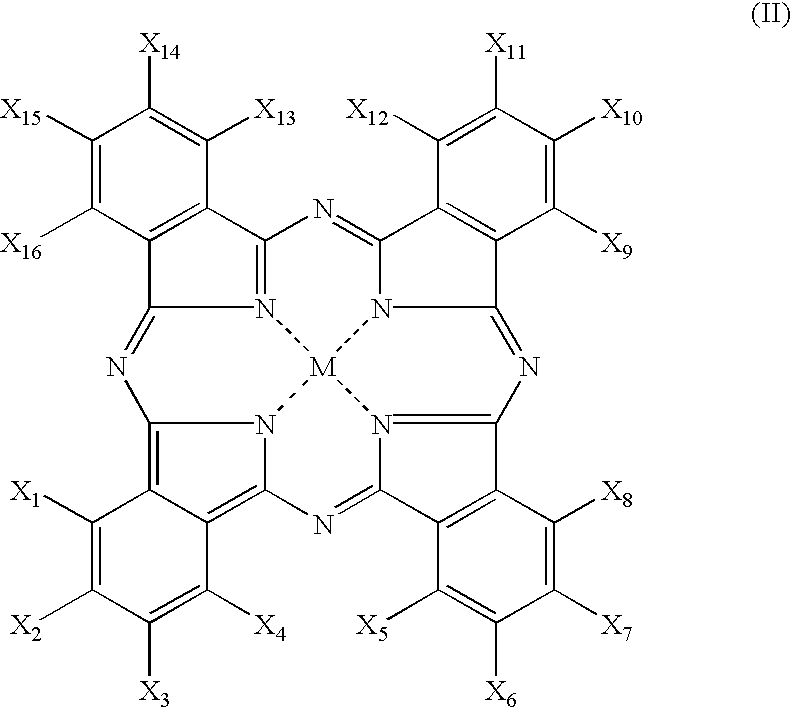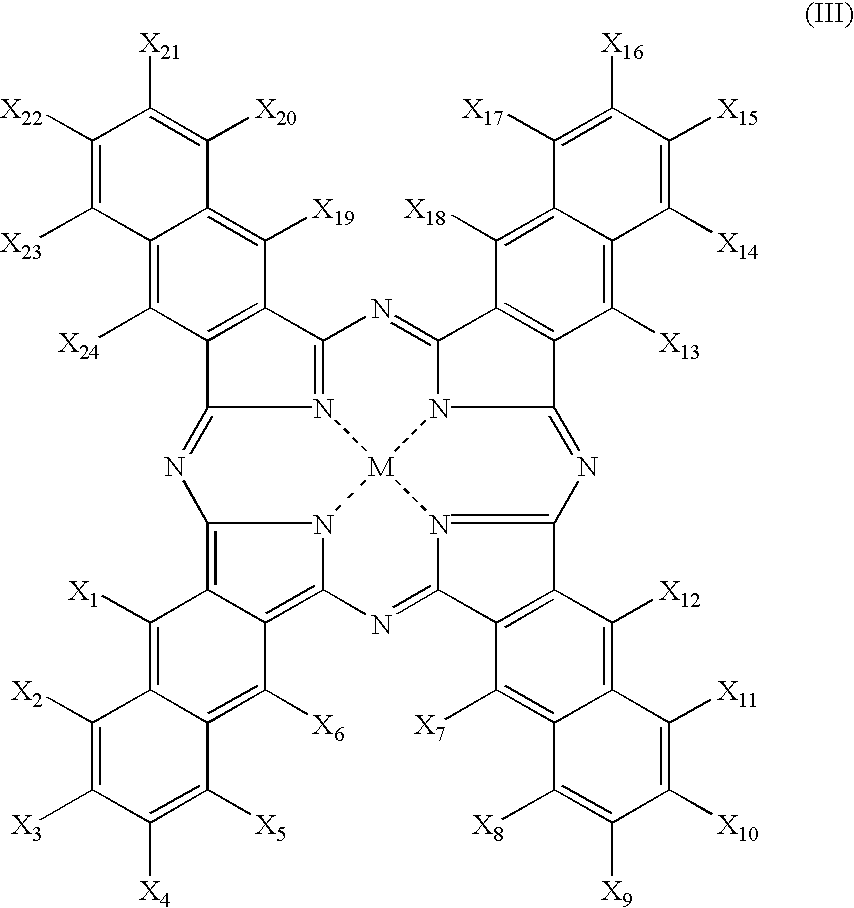IR-absorbing compositions
a composition and composition technology, applied in the field of absorbing compositions, can solve the problems of not knowing organic nir absorbers, unsuitable thermal and light stability, and inability to achieve the effect of absorbing heat and light,
- Summary
- Abstract
- Description
- Claims
- Application Information
AI Technical Summary
Benefits of technology
Problems solved by technology
Method used
Image
Examples
example 1
[0132]140 g indium(III) chloride (0.63 mol, anhydrous), 18 g tin(IV) chloride×5 H2O and 5.6 g caprolactam were added to 1400 ml water and stirred. After a clear solution had been formed, this was heated to 50° C. Once this temperature had been reached, 105 ml ammonium hydroxide solution (25%) were added dropwise with vigorous agitation. The suspension was stirred for a further 24 hours at a temperature of 50° C. A further 280 ml ammonium hydroxide solution were then added to the mixture for full precipitation. A white deposit consisting of indium hydroxide was formed, which was centrifuged off (30 min at 4000 rpm). The powder was dried in a vacuum drying oven at 190° C. until a slight yellowing of the powder could be determined. The dried powder was finely ground in a mortar, spread out in crystallising trays and placed in a forming gas oven. The oven was evacuated, then flooded with nitrogen. The oven was heated at a heating rate of 250° C. / hour to 250° C. with a nitrogen flow of 2...
example 2
[0133]Freshly produced nanoscale indium tin oxide (ITO) according to example 1 was used. Makrolon® 2808 was melted at 280° C. on a twin-screw extruder. 0.8 wt. % (example 2a) or 1.5 wt. % (example 2b) of nanoscale ITO were then added directly to the polycarbonate melt. The polymer extrudate was cooled and pelletised. The pellets were dried in a vacuum drying oven at 80° C. and processed into specimens measuring 60 mm×60 mm×2 mm on an injection moulding machine at 280° C.
example 3
[0134]100 parts of Makrolon® 2808 were compounded with 0.3 parts of 2′-hydroxy-3′-(2-butyl)-5′-(tert-butyl)phenyl)benzotriazole (Tinuvin® 350, Ciba Spezialitätenchemie, Basle), 0.47 parts of freshly produced ITO according to example 1, 0.0012 parts of Projet 830 NP (Avecia, Manchester, UK), 0.0025 parts of copper(II) 1,4,8,11,15,18,22,25-octabutoxy-29H,31H-phthalocyanine (Aldrich, D-89555 Steinheim, Germany) and 0.0096 parts of vanadyl 5,14,23,32-tetraphenyl-2,3-naphthalocyanine (Aldrich) at 280° C. and processed to produce coloured specimens as in example 2.
PUM
| Property | Measurement | Unit |
|---|---|---|
| particle size | aaaaa | aaaaa |
| particle size | aaaaa | aaaaa |
| particle size | aaaaa | aaaaa |
Abstract
Description
Claims
Application Information
 Login to View More
Login to View More - R&D
- Intellectual Property
- Life Sciences
- Materials
- Tech Scout
- Unparalleled Data Quality
- Higher Quality Content
- 60% Fewer Hallucinations
Browse by: Latest US Patents, China's latest patents, Technical Efficacy Thesaurus, Application Domain, Technology Topic, Popular Technical Reports.
© 2025 PatSnap. All rights reserved.Legal|Privacy policy|Modern Slavery Act Transparency Statement|Sitemap|About US| Contact US: help@patsnap.com



